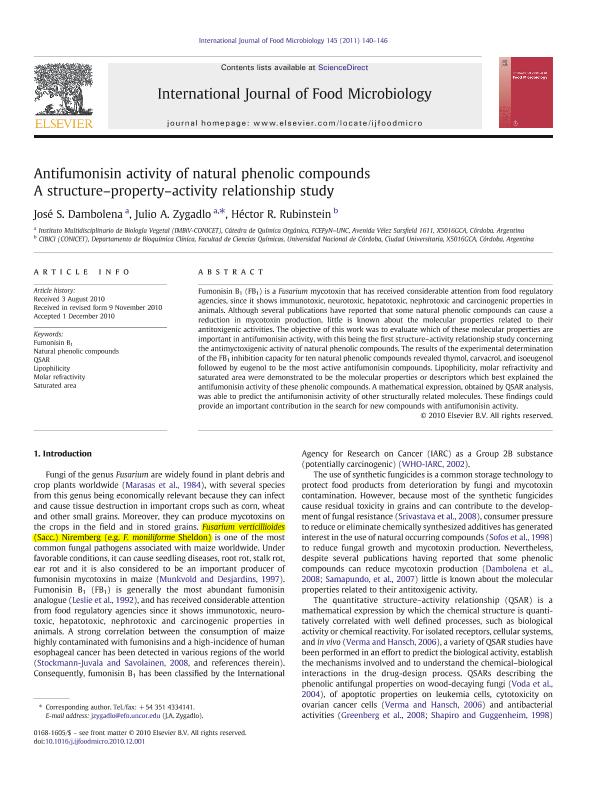Artículo
Antifumonisin activity of natural phenolic compounds: A structure–property–activity relationship study
Fecha de publicación:
01/2011
Editorial:
Elsevier Science
Revista:
International Journal Of Food Microbiology
ISSN:
0168-1605
Idioma:
Inglés
Tipo de recurso:
Artículo publicado
Clasificación temática:
Resumen
Fumonisin B1 (FB1) is a Fusarium mycotoxin that has received considerable attention from food regulatory agencies, since it shows immunotoxic, neurotoxic, hepatotoxic, nephrotoxic and carcinogenic properties in animals. Although several publications have reported that some natural phenolic compounds can cause a reduction in mycotoxin production, little is known about the molecular properties related to their antitoxigenic activities. The objective of this work was to evaluate which of these molecular properties are important in antifumonisin activity, with this being the first structure?activity relationship study concerning the antimyctoxigenic activity of natural phenolic compounds. The results of the experimental determination of the FB1 inhibition capacity for ten natural phenolic compounds revealed thymol, carvacrol, and isoeugenol followed by eugenol to be the most active antifumonisin compounds. Lipophilicity, molar refractivity and saturated area were demonstrated to be the molecular properties or descriptors which best explained the antifumonisin activity of these phenolic compounds. A mathematical expression, obtained by QSAR analysis, was able to predict the antifumonisin activity of other structurally related molecules. These findings could provide an important contribution in the search for new compounds with antifumonisin activity.
Archivos asociados
Licencia
Identificadores
Colecciones
Articulos(IMBIV)
Articulos de INST.MULTIDISCIPL.DE BIOLOGIA VEGETAL (P)
Articulos de INST.MULTIDISCIPL.DE BIOLOGIA VEGETAL (P)
Citación
Dambolena, Jose Sebastian; Zygadlo, Julio Alberto; Rubinstein, Héctor; Antifumonisin activity of natural phenolic compounds: A structure–property–activity relationship study; Elsevier Science; International Journal Of Food Microbiology; 145; 1; 1-2011; 140-146
Compartir
Altmétricas




